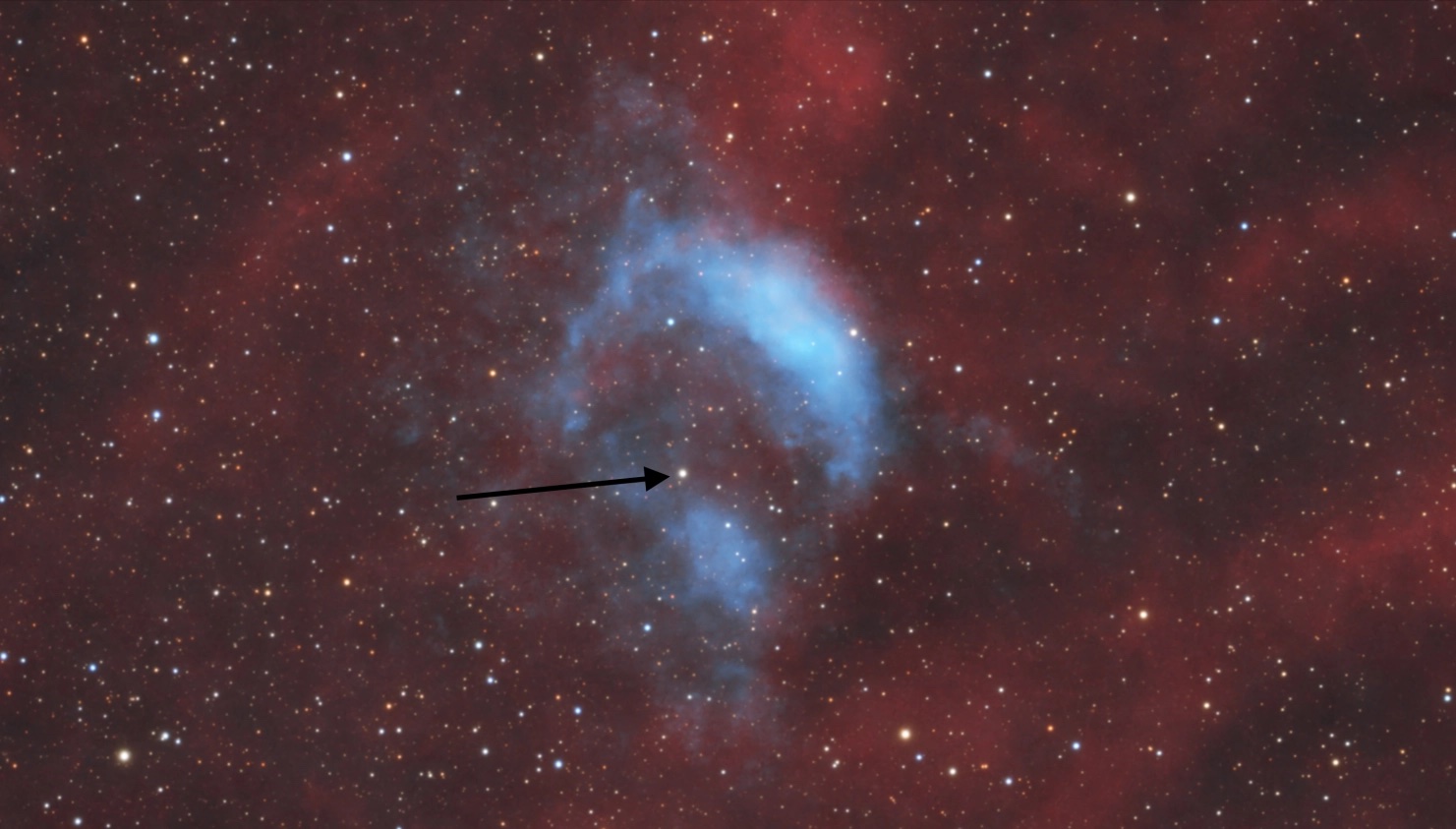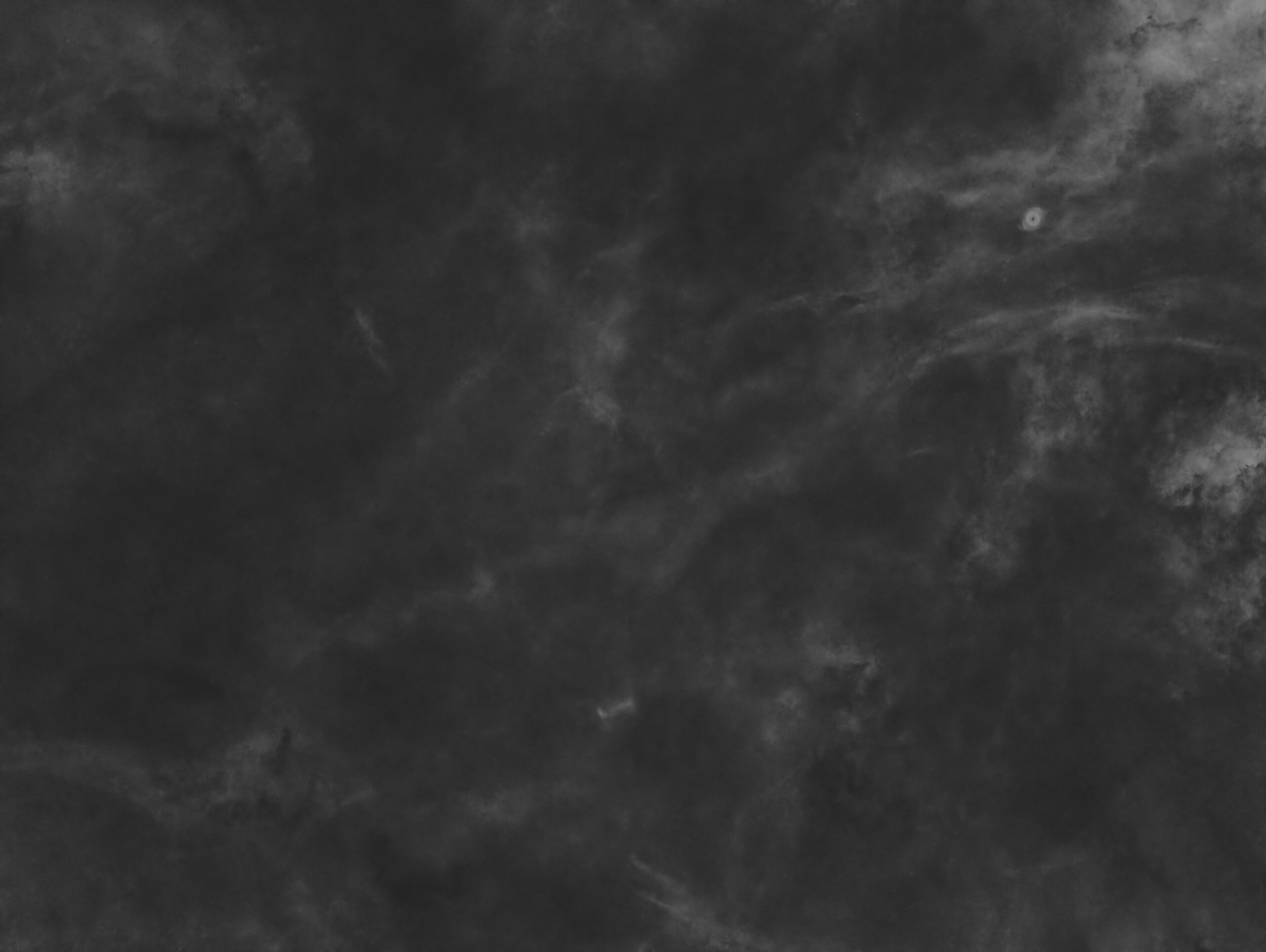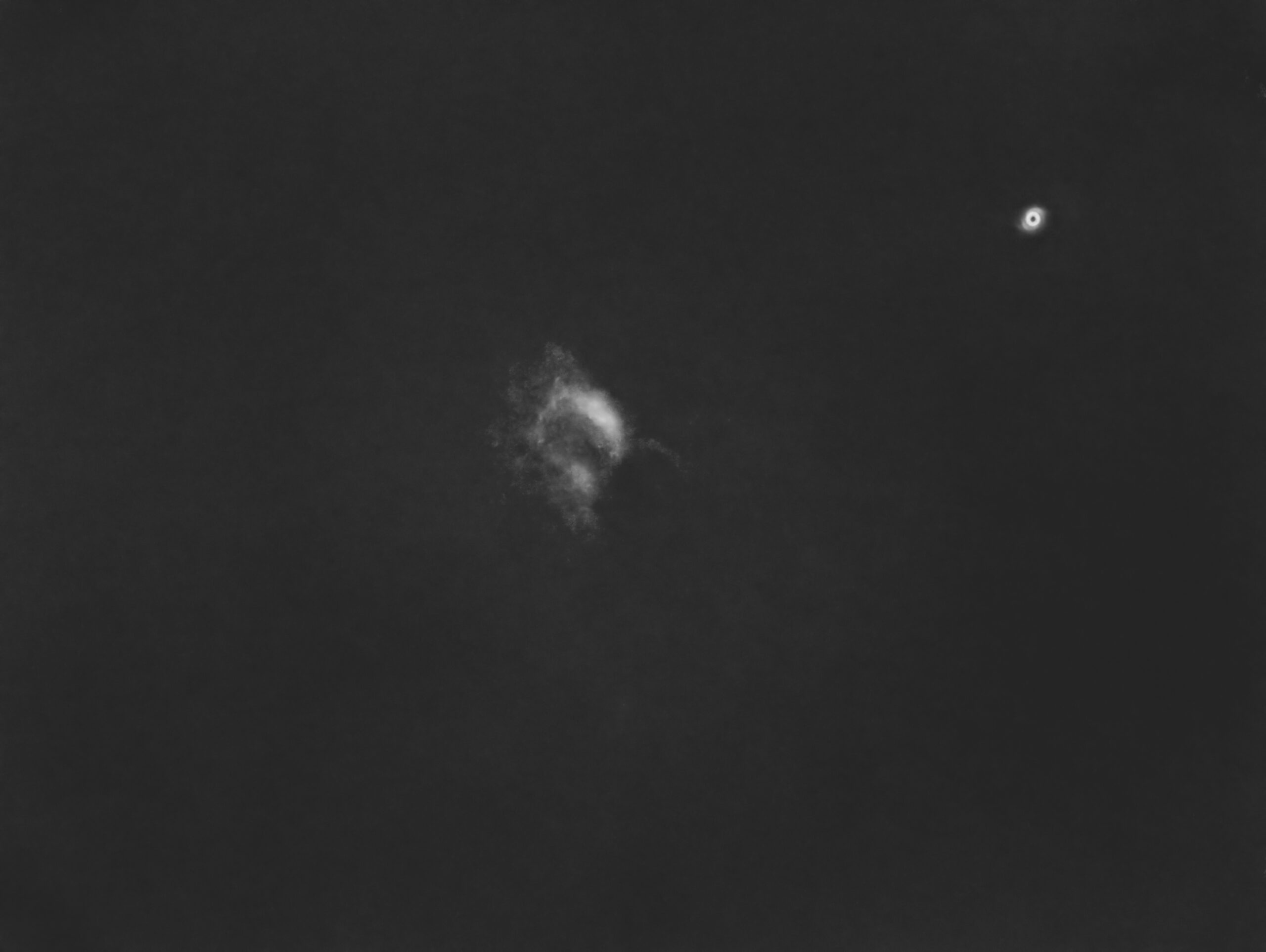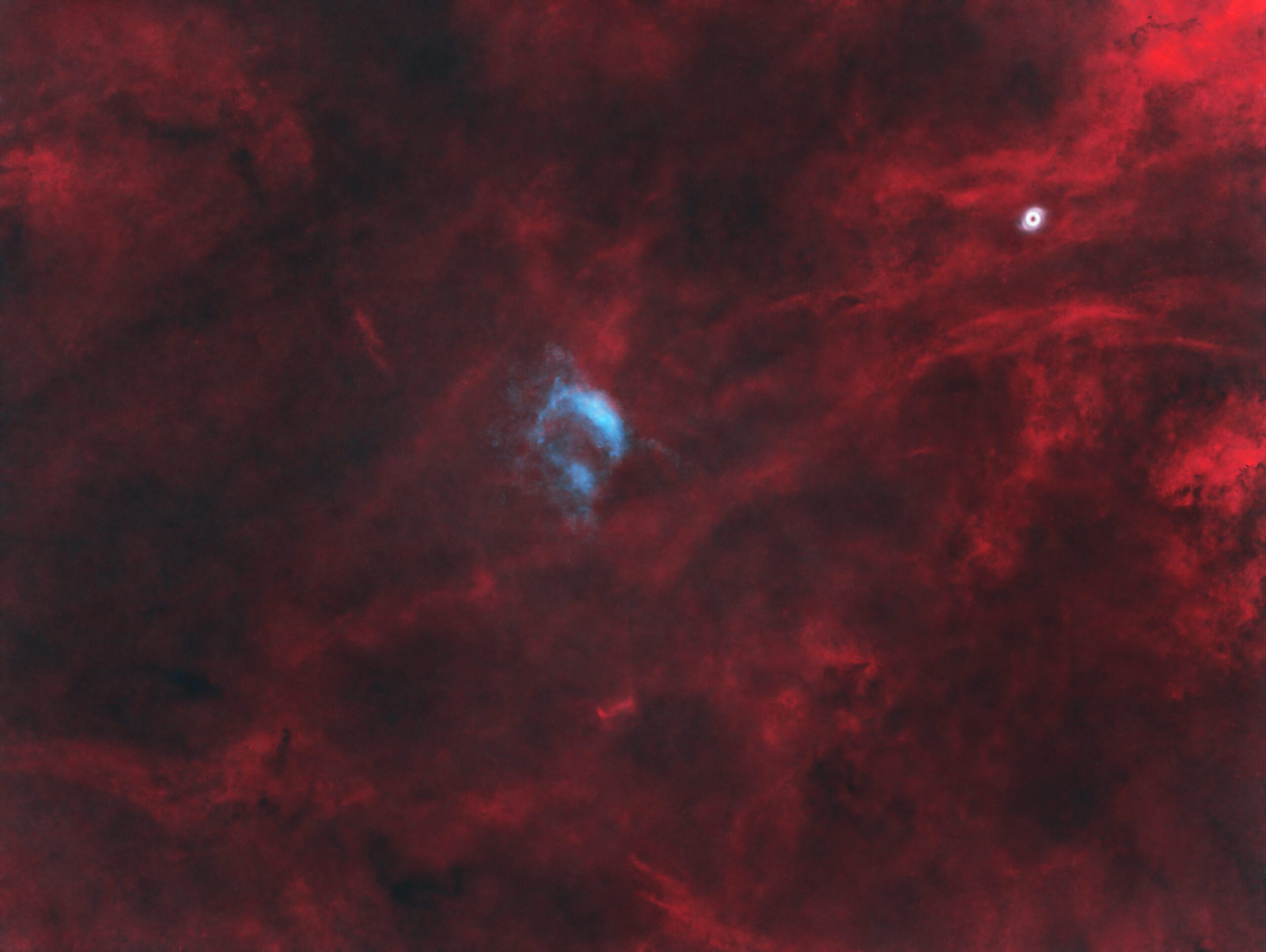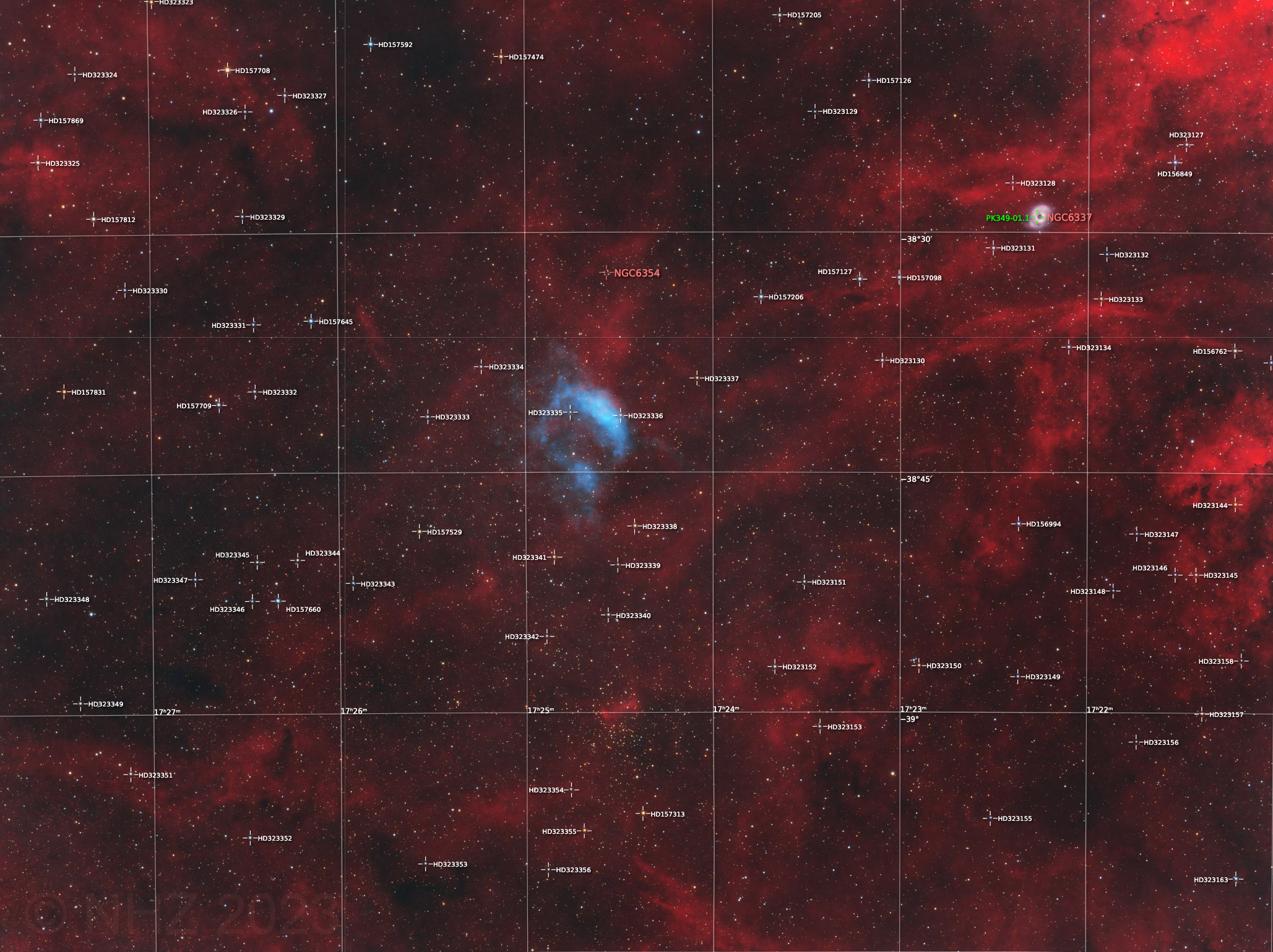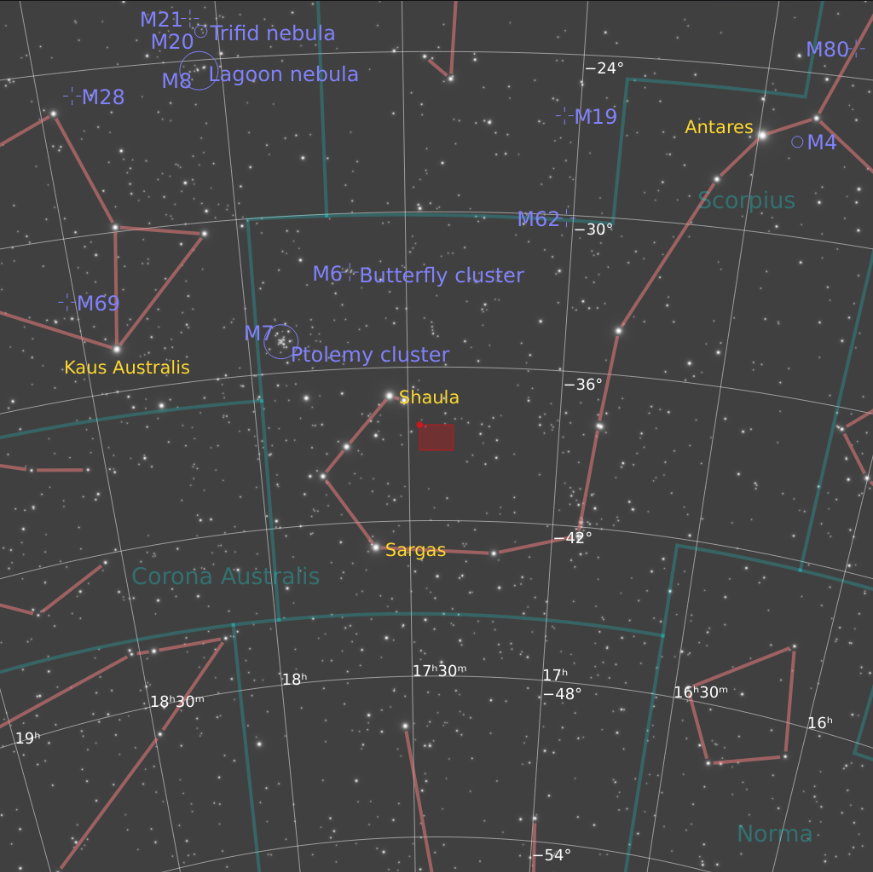A New Discovery in Scorpius: The Phantom Stinger Nebula
Our astrophotography team NHZ (New Horizon) is thrilled to share the intriguing details of what could be a new discovery. Nestled within the constellation of Scorpius, we have identified a structure, which we’ve tentatively named the “Phantom Stinger Nebula” due to its shape, location, and very faint nature. As part of this project I was tasked with capturing and processing the data near these coordinates given to me by team leader Tim Schaeffer. We were hoping to find a SNR at the original coordinates but it turns out that I noticed a strange patch of Oiii slightly outside the field of view instead. After reframing the target this is what we have unveiled.
Morphology and Origins:
This nebula reveals its form predominantly in the OIII emission. At the heart of the Phantom Stinger Nebula lies a Herbig Ae/Be star, known for being a young, massive star often associated with reflection nebulae. It is encapsulated in a circular OIII nebula, which doesn’t align with the typical characteristics of a Wolf-Rayet (WR) star normally associated with this type of emission nebula, instead showing a closer match to the spectrum of an Ae/Be star. The origin of this object so far remain a mystery but the presence of this Herbig Ae/Be star could be linked to it presence.
Unveiling the Mystery:
What makes the Phantom Stinger Nebula particularly fascinating is the absence of any documented nebulae in its vicinity, according to our searches in the SIMBAD, HASH and all other public databases. We have reached out to a professional astrophysicist to cross-check our observation, and it seems that this star, along with its nebula, may be referenced (as per the “YDoH” notation) in a study, ‘Dong+H 1991,’ which seems to be published in an obscure Chinese journal that is hidden behind a paywall. After getting our hands on the study we could confirm that our discovery was not mentioned. Furthermore, we could not find any optical images of this object and we are pretty certain that this is a new discovery and the first publicly published colour image of this object.
Analysis and additional information:
Our ongoing investigation into the nebula’s origins has been further informed by detailed spectral analysis of the Herbig Ae/Be Star CD-38 11837 (MWC 878/Hen 3-1398). This star exhibits a complex spectrum rich in emission lines, indicative of significant gas motions in its vicinity, likely due to a circumstellar disk or outflows. Notably, the spectrum includes hydrogen Balmer and Paschen lines, Ca II lines, as well as various lines from helium, oxygen, nitrogen, sulfur, and argon.
This extensive emission-line spectrum is characteristic of a B1Ve type star, as determined by the presence and absence of specific lines, particularly around helium. The classification as a B1Ve star, which is a B-type star with emission lines, highlights its youthful and dynamic nature. Such stars are known to significantly influence their surrounding environments, making MWC 878 a prime candidate for contributing to the nebula’s formation and structure.
The estimated distance of MWC 878, approximately 6188 light years away based on its parallax measurement, aligns with the common distances of many nebulae within our galaxy, further supporting the likelihood of its association with the nearby nebula.
The star’s location, at celestial coordinates RA 17 24 44.708, Dec -38 43 51.47, is depicted in the accompanying image. The image provides a visual context for the star’s position relative to the surrounding nebular material, offering insights into the potential interaction between the star and the nebula.
This spectral information enriches our understanding of MWC 878’s role in the nebula’s genesis and morphology. However, it’s crucial to note that while the spectral data provides strong evidence for the star’s energetic activities and possible influence on the nebula, direct observational evidence of the interaction would be invaluable in confirming this hypothesis.

